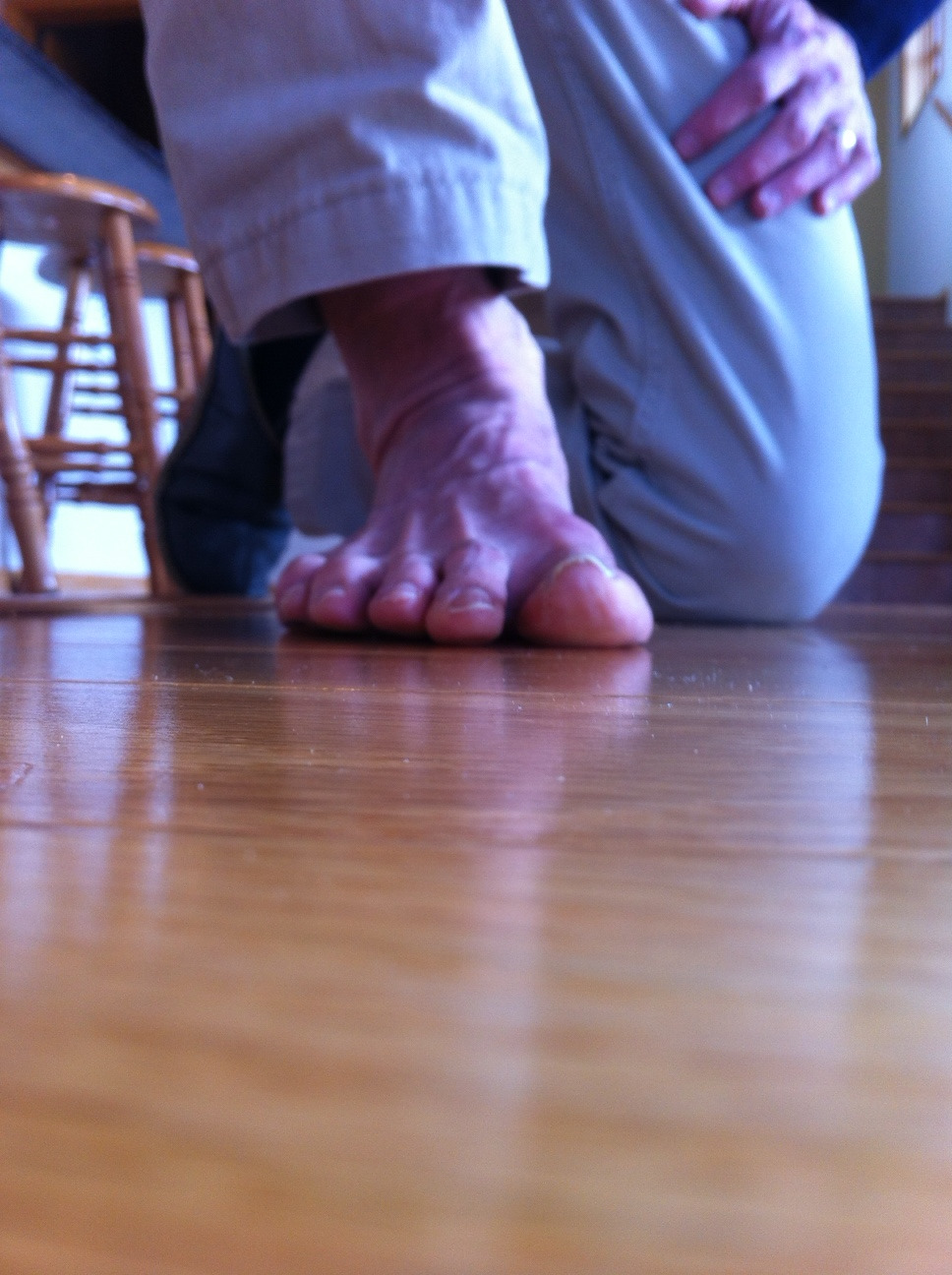Medial or lateral ankle swelling. Not a unicorn, but perhaps close.
Photo: note the enlargement of the soft tissue in the left medial achilles area.
Many times over the last 5 years we have written about the concept that you have to know something exists to even make it a clinical consideration when trying to troubleshoot a clients pain or problem. Without knowing something even exists, you will move onto another diagnostic assumption and perhaps be treating the wrong problem. This is a big problem in medicine because there is no way any of us knows everything. But this is why we all read, we study, we ask questions and we learn from our mistakes and depend on lateral and higher pay-grade referrals.
Look at the photos above. Do you or your client have a posterior mass or swelling along side the achilles, medially or laterally ? Are you a rare bipedal mammal or do you have a lipoma, hemagioma or even sarcoma ? Perhaps it is a swollen achilles ? Are there nodular densities in the achilles tendon proper that might suggest micro tears ? Are the regional busae swollen ? Those are all logical first steps, but maybe it is just a rarity, a more common unicorn of lower limb anomalies (10% incidence), the “accessory soleus”.
When an accessory soleus muscle is present a soft-tissue mass appears bulging medially between the distal part of the tibia and the Achilles tendon. This apparent “swelling”, may be entirely symptom free because it is merely an anatomic variant. However, variants can become a problem when they impair stability or mobility or when they become irritated because of the same issues elsewhere. This muscle has its own individual tendon slip onto the calcaneus anteromedial to the Achilles insertion. This entity is not always painful or symptomatic but it can be expressive during exercise in some clients. When they present clinically symptomatic one must rule out pathomechanics of the foot, ankle or lower kinetic chain. The appearance of the assessory soleus is easily diagnostic on CT and MRI imaging. Some sources recommend fasciotomy or excision of the accessory muscle, clearly radical initial measures, but most of the time they can be quieted by resolving the pathomechanics that have allowed this previously quite clinical entity to become symptomatic. If the problem is just recently symptomatic, it is likely not the problem, rather the environment (workout changes, shoe changes, tissue length-tension relationship changes, mobility or stability changes etc) has changed and put a demand on the area and created once quiet tissues to complain.
First one must rule out the nasties, as we eluded to earlier (lipoma, hemagioma, synovial sarcoma etc) and then rule out the complainers (busae, tendonopathies etc) and then look at mobility and stability deficits/challenges. Once all of the more likely suspects have been ruled out, it is time for considering unicorns.
Here are some thoughts. On heel rise does the soft tissue mass become firm as in a muscular contraction would become firm ? After all, it is a soleus component and can act as an ankle plantarflexor of the ankle. Or it is merely firm on forced dorsiflexion because the achilles is drawn firm and tight against the posterior tibia thus medially displacing the soft tissue into a smaller more compacted area? Is the area painful on running ? Jumping? Starts and stops ? Only painful during rest, going up stairs, down stairs, only biking, swimming ? One can see that an understanding the mechanics of an area and how to challenge that area to your diagnostic advantage can help you tease out many of the considerations above. In this day and age, we always have imaging to fall back on, but remember, imaging is a static picture in a moment of time in an unloaded unfunctional posturing. You will treat your client and their problem, not the imaging. If they in fact do turn out to have an accessory soleus that is inflamed on imaging, you still have to figure out why it has suddenly become cranky and painful. The bottom line is that many people with a painful accessory soleus are coming to you because something they have done, or are doing, or are compensating around is causing a change in mechanics that is bothering the tissue. This is where your knowledge of the kinetic chain and foot types, shoe types (see our National Shoe Fit program review here) and gait biomechanics can be invaluable. Figuring out these issues should be your first line of intervention, and then confirmation on imaging can truly be valuable.
The accessory soleus, is a more common entity in primates. Is this further proof we used to have tails and swing from trees ? Maybe not, but it is still fun to think about though.
Shawn and Ivo, the gait guys






























